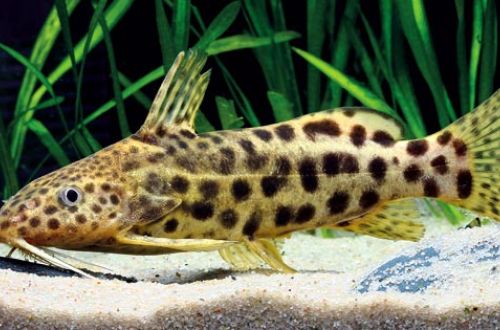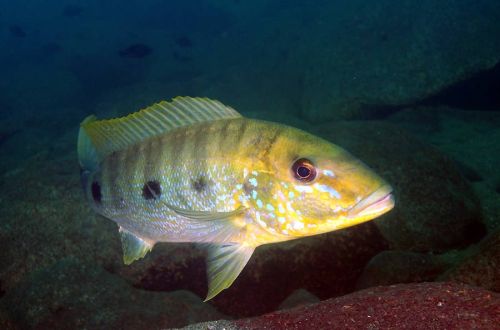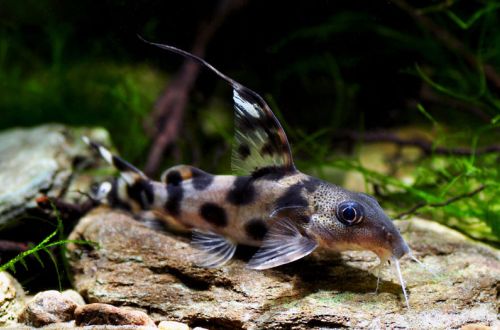
Synodontis Lotti
Synodontis waterloti, scientific name Synodontis waterloti, belongs to the Mochokidae family. A relatively calm fish that gets along well with other non-aggressive species. It is easy to keep and unpretentious, which allows it to be kept in a common aquarium. May be recommended for beginner aquarists.

Contents
Habitat
It comes from the region of equatorial and subequatorial Africa from the territory of such states as Guinea, Liberia, Guinea-Bissau, Sierra Leone, Ghana. It lives in numerous river systems flowing under the canopy of moist rainforests. The habitat is characterized by silty soils, an abundance of aquatic vegetation and plant residues (snags, foliage, fruits, etc.).
Brief information:
- The volume of the aquarium – from 80 liters.
- Temperature – 23-25°C
- Value pH — 6.5–7.5
- Water hardness – soft to medium hard (5-15 dGH)
- Substrate type – sandy, soft
- Lighting – subdued or moderate
- Brackish water – no
- Water movement – light or moderate
- The size of the fish is up to 18 cm.
- Nutrition – any drowning
- Temperament – peaceful
- Content is single or in a small group in the presence of shelters
Description
Adult individuals reach a length of about 18 cm. Sexual dimorphism is weakly expressed. Females are somewhat larger than males. However, it is unlikely that sex can be determined by this criterion in a group of fish of different ages. The color is yellow with large brown dots. Depending on the region of origin, the pattern may change – irregularly shaped spots appear instead of dots.
Food
Undemanding to the composition of food, accepts all types of popular feeds. It is desirable that they be sinking, since catfish feed at the bottom, and contain herbal supplements. The diet may look like this – dry food (flakes, granules) in combination with live or frozen foods and pieces of vegetables / fruits.
Maintenance and care, arrangement of the aquarium
The optimal size of the aquarium for one catfish starts from 80 liters. This is quite enough for a relatively small and inactive fish. The design uses soft substrates, such as fine sand, pieces of snags and twisted roots as a shelter. Dense aquatic vegetation will give a more natural look. Lighting is subdued, floating plants can be an additional means of shading.
The quality and hydrochemical composition of the water is of key importance in the maintenance of Synodontis Loti. To maintain suitable conditions, at a minimum, you will need a productive filtration system and regular aquarium maintenance procedures (changing some of the water, cleaning organic waste, etc.)
Behavior and Compatibility
It is considered a territorial fish that will defend its area at the bottom from other relatives. However, aggressive behavior is low, which makes it possible to keep several Synodontis together. Peaceful towards other fish, provided that they are not too small, otherwise they can be accidentally eaten. This is not a sign of hostility, but rather promiscuity in food, inherent in most catfish.
Fish diseases
The main cause of most diseases is unsuitable living conditions and poor-quality food. If the first symptoms are detected, you should check the water parameters and the presence of high concentrations of hazardous substances (ammonia, nitrites, nitrates, etc.), if necessary, bring the indicators back to normal and only then proceed with treatment. Read more about symptoms and treatments in the Aquarium Fish Diseases section.





